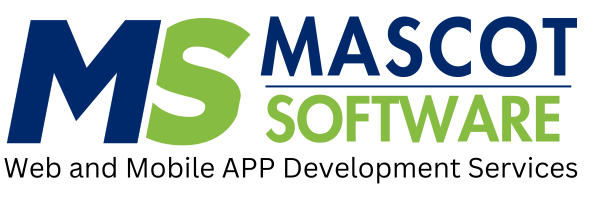
1. Understanding APIs and PHP
APIs are interfaces that allow different software systems to communicate with each other. They enable developers to access the functionalities of other applications, services, or platforms, without having to understand their internal workings. PHP, with its extensive library support and flexible syntax, is well-suited for working with a wide range of APIs.
2. Integrating with Third-Party APIs
PHP makes it straightforward to connect with numerous third-party APIs, enhancing your web application's capabilities. Here are a few popular types of third-party API integrations:
a. Social Media APIs
Integrating social media APIs allows your application to interact with platforms like Facebook, Twitter, Instagram, and LinkedIn. You can enable users to log in using their social media accounts, fetch and display their social media feeds, and share content directly from your application.
Example:
- Facebook Graph API: Use PHP to fetch user data, post updates, and manage pages.
- Twitter API: Retrieve tweets, post statuses, and follow/unfollow users programmatically.
// Example: Fetching recent tweets using Twitter API require "vendor/autoload.php"; use Abraham\TwitterOAuth\TwitterOAuth; $consumerKey = 'YOUR_CONSUMER_KEY'; $consumerSecret = 'YOUR_CONSUMER_SECRET'; $accessToken = 'YOUR_ACCESS_TOKEN'; $accessTokenSecret = 'YOUR_ACCESS_TOKEN_SECRET'; $connection = new TwitterOAuth($consumerKey, $consumerSecret, $accessToken, $accessTokenSecret); $tweets = $connection->get("statuses/user_timeline", ["count" => 10, "exclude_replies" => true]); foreach ($tweets as $tweet) { echo $tweet->text . "
"; }
b. Payment Gateway APIs
Integrating payment gateways like PayPal, Stripe, and Square enables secure and seamless transactions on your website. This is essential for e-commerce applications, subscription services, and any platform requiring monetary transactions.
Example:
- Stripe API: Process payments, manage subscriptions, and handle refunds using PHP.
// Example: Processing a payment using Stripe API require 'vendor/autoload.php'; \Stripe\Stripe::setApiKey('YOUR_STRIPE_SECRET_KEY'); $token = $_POST['stripeToken']; $charge = \Stripe\Charge::create([ 'amount' => 5000, // Amount in cents 'currency' => 'usd', 'description' => 'Example charge', 'source' => $token, ]); echo "Charge successful: " . $charge->id;
3. Building RESTful APIs with PHP
In addition to consuming APIs, PHP is also powerful for creating your own RESTful APIs. This is particularly useful for developing backend services for mobile applications, single-page applications (SPAs), and micro-services.
a. Slim Framework
Slim is a lightweight PHP framework that is perfect for creating simple yet powerful RESTful APIs.
// Example: Creating a simple RESTful API with Slim require 'vendor/autoload.php'; $app = new \Slim\App; $app->get('/hello/{name}', function ($request, $response, $args) { $name = $args['name']; return $response->withJson(['message' => "Hello, $name"]); }); $app->run();
b. Laravel
Laravel, a more feature-rich framework, provides tools like Eloquent ORM and resource controllers to build robust APIs efficiently.
// Example: Creating a RESTful resource controller in Laravel php artisan make:controller UserController --resource // In UserController.php public function index() { $users = User::all(); return response()->json($users); }
4. Database Integrations
PHP excels at integrating with various databases, making it possible to build data-driven applications. Whether it's MySQL, PostgreSQL, MongoDB, or SQLite, PHP offers the tools and libraries needed for seamless database interactions.
Example:
- MySQL Integration: Use PDO (PHP Data Objects) for secure and efficient database operations.
// Example: Fetching data from MySQL using PDO $dsn = 'mysql:host=localhost;dbname=testdb'; $username = 'root'; $password = ''; try { $pdo = new PDO($dsn, $username, $password); $stmt = $pdo->query("SELECT * FROM users"); while ($row = $stmt->fetch(PDO::FETCH_ASSOC)) { echo $row['name'] . "
"; } } catch (PDOException $e) { echo 'Connection failed: ' . $e->getMessage(); }
5. Real-Time Applications
Real-time features such as chat applications, notifications, and live updates can be implemented in PHP using WebSockets or integrating with real-time platforms like Pusher.
Example:
- Pusher Integration: Use Pusher to add real-time functionality to your PHP application.
Conclusion
PHP's capability to integrate with a vast array of APIs and technologies makes it an indispensable tool in the web developer's toolkit. Whether you're enhancing your application with social media features, processing payments, building RESTful services, or creating real-time interactions, PHP provides the flexibility and power needed to bring your ideas to life.
By leveraging PHP's integration capabilities, you can build web applications that are more interactive, dynamic, and responsive to user needs. Embrace the power of PHP and explore the endless possibilities it offers for integrating with the web.



.png)


